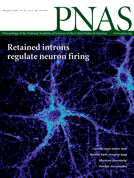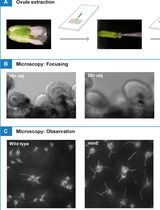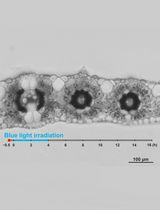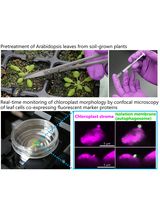- EN - English
- CN - 中文
Atomic Force Microscopy (AFM) Analysis of Cell Wall Structural Glycoproteins in vitro
原子力显微镜(AFM)法体外分析细胞壁的结构糖蛋白
发布: 2015年07月20日第5卷第14期 DOI: 10.21769/BioProtoc.1534 浏览次数: 9429
评审: Renate WeizbauerFanglian HeAnonymous reviewer(s)
Abstract
Hydroxyproline-rich glycoproteins (HRGPs) are major protein components in dicot primary cell walls and generally account for more than 10% of the wall dry weight. As essential members of the HRGP superfamily, extensins (EXTs) presumably function in the cell wall by assembling into positively charged protein scaffolds (Cannon et al., 2008) that direct the proper deposition of other wall polysaccharides, especially pectins, to ensure correct cell wall assembly (Hall and Cannon, 2002; Lamport et al., 2011a). Extensins are recalcitrant to purification as they are rapidly cross-linked into a covalent network after entering the cell wall but there exists a short time window in which newly synthesized extensin monomers can be extracted (Smith et al., 1984; Smith et al., 1986) by salt elution. A detailed protocol for extraction of extensin and other wall structural proteins has been described earlier (Lamport et al., 2011b). The protocol elaborated here provides an approach to studying the self-assembly of extensins and potentially of other cell wall components in vitro using AFM.
Keywords: Plant cell wall (植物细胞壁)Materials and Reagents
- Monomeric extensin proteins extracted from different plant cell suspension culture lines. For a detailed extensin extraction protocol see Lamport et al. (2011b).
- Bovine serum albumin (BSA, lyophilized powder, crystallized, purity ≥ 98.0%) (Sigma-Aldrich, catalog number: 05470 )
- Sodium acetate (NaOAc, anhydrous, purity ≥ 99.0%) (Sigma-Aldrich, catalog number: S8750 )
- Acetic acid (HOAc, ACS reagent, purity ≥ 99.7%) (Sigma-Aldrich, catalog number: 320099 )
- Deionized-distilled water (ddH2O)
- 75% ethanol (prepared from 100% ethanol, ACS reagent, purity ≥ 99.5%) (Sigma-Aldrich, catalog number: 459844 )
- Loctite® Epoxy instant mix glue
- 50 mM NaOAc buffer (see Recipes)
- 75% ethanol (see Recipes)
Equipment
- Highly ordered pyrolytic graphite (square shape 5 mm (L) x 5 mm (W) x 1 mm (H) in dimension) (Structure Probe, catalog number: 476HPAB )
- Kimwipes (VWR International, catalog number: 470173498 )
- Plastic petri dishes (100 x 15 mm dimension) (VWR International, catalog number: 25384302 )
- NCS18 silicon probe (75 kHz, 3.5 N/m) (Mikromasch, catalog number: HQ:NSC18/Cr-Au-15)
- Scotch tape (single sided Scotch® MagicTMTape 810)
Note: Available from office supply stores like Staples. - 10 ml sterile syringes (BD Biosciences, catalog number: 309659 )
- 0.2 µm syringe filters (Whatman, catalog number: 6896-2502 )
- 20 ml disposable scintillation glass vials (VWR International, catalog number: 66022065 )
- Eppendorf tubes(1.5 ml) (Eppendorf, catalog number: 022431081 )
- Regular microscope slides (dimension 25 x 75 x 1mm)
- MFP-3D-SA AFM (Asylum Research, model: MFP-3D-SA AFM )
- Stainless steel tweezers (Sigma-Aldrich, catalog number: T5415 )
- Cylinder of nitrogen gas with a pressure regulator and nozzle
- Vortex mixer
- Centrifuge (to fit Eppendorf 1.5 ml tubes)
Software
- IGOR Pro 6 (WaveMetrics, Portland, OR)
Procedure
文章信息
版权信息
© 2015 The Authors; exclusive licensee Bio-protocol LLC.
如何引用
Chen, Y., Chen, L., Kieliszewsk, M. J. and Cannon, M. C. (2015). Atomic Force Microscopy (AFM) Analysis of Cell Wall Structural Glycoproteins in vitro. Bio-protocol 5(14): e1534. DOI: 10.21769/BioProtoc.1534.
分类
植物科学 > 植物细胞生物学 > 细胞成像
植物科学 > 植物细胞生物学 > 细胞结构
细胞生物学 > 细胞成像 > 原子力显微镜
您对这篇实验方法有问题吗?
在此处发布您的问题,我们将邀请本文作者来回答。同时,我们会将您的问题发布到Bio-protocol Exchange,以便寻求社区成员的帮助。
Share
Bluesky
X
Copy link














